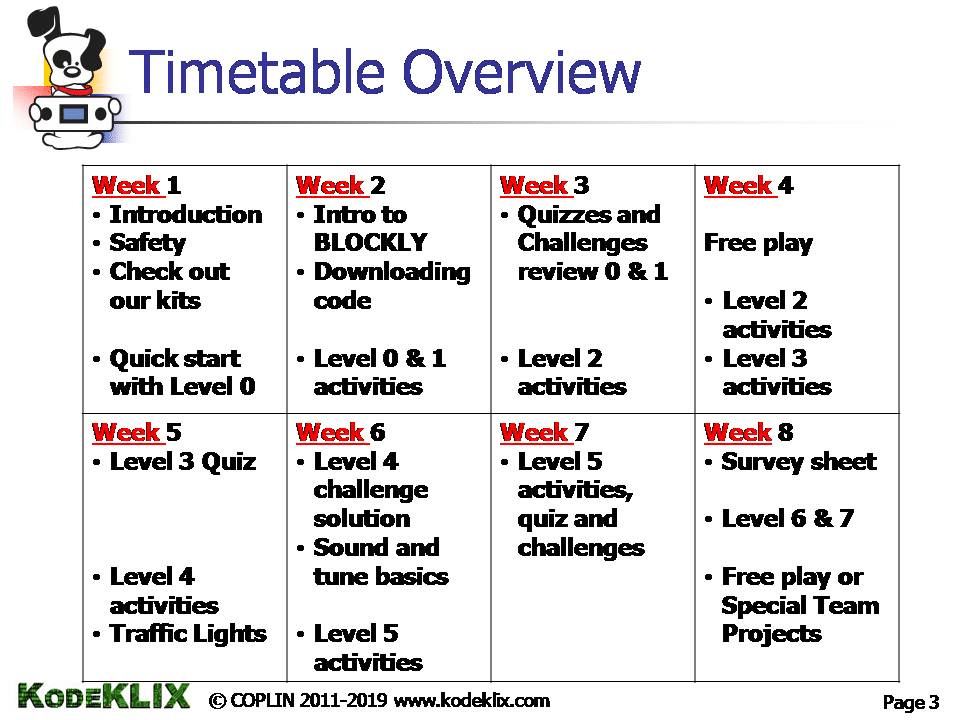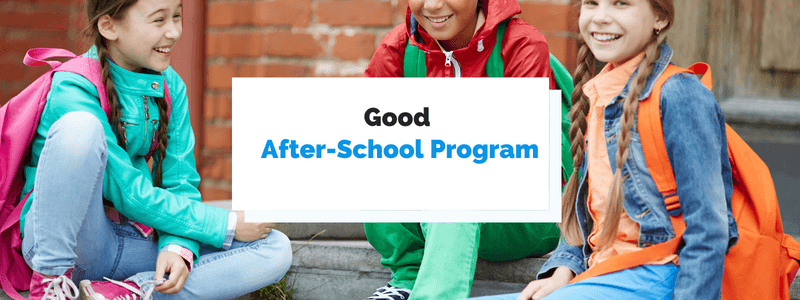A well-structured after-school program can provide all sorts of benefits for children, from social skill development to improved performance and behavior in class.
To create such a program, it helps to review the elements that almost all exceptional after-school programs have in common, so you can then implement them into your own.
In this article, we’ll cover those fundamentals—a strong curriculum, qualified program staff, safety measures, etc.—and help you create a program that both parents and children will adore and recommend to others in their community.
- A Quality Curriculum
- Enrichment Activities
- An Emphasis on Social Development
- Qualified Program Staff
- A Focus on Child Safety
- Conclusion
A Quality Curriculum
A strong school program will have an age-appropriate, systematic curriculum with a focus on academics and skill development.
The program should lead children through a strategically ordered set of activities, exercises, and lessons that produce some tangible outcome in their abilities, be it better math grades, fewer fights with children their own age, or improved painting or music skills.
For example, here’s a calendar from an after-school coding program outlining eight weeks of the curriculum:

Source: KodeKLIX
Note that every week is focused on some academic, skill-based outcome.
For example, by the end of week two, attendees will have learned the software and done level 0 and 1 activities.
But the curriculum also involves other activities like free play and special team projects that are outside the scope of academics. Not all time is devoted to studying.
Along with teaching children skills, after-school programs should also provide support for schoolwork, like tutoring or help with homework assignments and school projects.
This not only helps students succeed, but also lightens the load for parents, who can now spend more time playing with their children and less time acting as stand-in teachers.
On another note, it’s often a good idea to use or create a curriculum that closely follows or relates to what they’re learning in school at the time.
Partner with schools to create synergy in this area.
Another tip for creating a quality curriculum is to sometimes have multiple activities coinciding so that students can select the one that most fits their interests.
For example, from 4 PM to 5 PM, you might give students the option to attend a painting session or do a quiet reading hour.
That way, you ensure that the students are attending your activities because they’re really interested in being there, and not just because they have nowhere else to be in that time slot.
As a result, you’ll be able to impart more to the students, as they’ll be motivated to learn from the outset.
When your program has a curriculum that produces desirable intellectual and emotional outcomes, parents will see the value of sending their children there.
Enrichment Activities
In addition to academic support and skill building, successful after-school programs also offer enrichment activities that are fun and educational.
Your program shouldn’t feel like an extension of the school day.
According to a study by Policy Study Associates, the most successful programs had “weekly schedules [that] included homework help, project-based activities, arts, crafts, performing arts, and both structured and unstructured recreation.”
Providing a mix of activities on top of an academic curriculum allows attendees to develop more than just the intellect, helping them hone their social skills, confidence, executive functions like decision-making and leadership, emotional IQ, and self-understanding and self-acceptance.
Here are some enrichment activities to consider adding to your program’s schedule:
| Arts | Teach performance arts like acting and singing or visual arts like painting and drawing. |
| Crafts | Give them the tools and materials they need to create something, be it a turkey cutout for thanksgiving or a scary mask for Halloween. |
| Structured play | Set up games like red light, green light or freeze tag to ensure everyone is involved. Here’s more on structured recess. |
| Unstructured play | Let the children decide what they play and how they do it. This teaches them teamwork and organizational skills. |
| Free reading | Give them a chance to read whatever they want for fun, not for school. This will show them the joys of reading and broaden their horizons beyond the curriculum. |
| Mentoring | Teach them life skills and help them work out their problems in a way that will show them how to develop and maintain positive relationships with other people. |
By offering exposure to a diverse collection of activities, you also help children cultivate an understanding of their authentic interests.
After experiencing the thrills of sketching a landscape, one attendee might take it up as a hobby, and in time even realize it’s their calling.
In Range: Why Generalists Triumph in a Specialized World, David Epstein argues that most masters of their craft or discipline went through a sampling period, a time when they experimented with different types of activities.
Set your program up to provide range and give your attendees glimpses of all the fields of knowledge and play, and who knows how many matches in the minds of the young you’ll light, how many unceasing flames of passion and curiosity you’ll spark.
An Emphasis on Social Development
Social development is lagging in schools, with eighty-seven percent of public schools stating that the pandemic damaged the socio-emotional development of the students during the 2021–2022 school year, according to an NCES report.
This means that after-school programs are incredibly important to a child’s social development.
It gives them more time to work on their social skills and make up for the harm caused by the pandemic.
In other words, after-school programs should provide an environment where children can learn important social skills through interaction with the program’s staff and other children in attendance.
Here are some social skills your program should aim to cultivate in your attendees:
| Compromising | Free play provides a chance for children to negotiate and compromise when deciding what to do and which games to play. |
| Appreciation of differences | A diverse body of attendees with different backgrounds will give children a chance to learn about and appreciate different cultures and perspectives. |
| Cooperation | Team projects help children learn how to work together to accomplish a common goal. |
| Listening | Sessions with an adult who’s skilled in active listening will demonstrate to children how they should listen to others. |
If you take social development seriously, your program will help children communicate more effectively, make stronger friendships, manage conflicts, and more effectively navigate their social world.
Qualified Program Staff
Your after-school program should hire qualified program staff members that are able to connect easily with children.
Program staff should help children learn, build positive relationships with others, and discourage them from making bad choices.
It’s critical to find staff members that have experience working with children and have credentials that prove they’re capable of doing the work.
For example, if your program curriculum teaches students how to write essays, find someone with experience teaching or doing essay writing professionally.
Ideally, though, you’d want to hire someone who has taught children in your age range how to write.
You should also look for people with qualities that make them good with children, such as patience, child-monitoring skills, leadership abilities, calmness, and plenty of energy.
The child-facing staff isn’t the only portion of your overall staff that you should properly vet.
Responsible maintenance staff is also important for keeping the areas clean and safe for children.
Also, your secretarial staff members should be organized, friendly, and helpful, as they’ll be helping you manage the program and interacting with parents regularly.
Taking adequate time to consider each new team member’s qualifications is key to running a successful after-school program that children rave about and parents trust.
A Focus on Child Safety
Parents want to feel comfortable leaving their children with you. Your program should therefore focus on taking measures to create a safe environment for the children.
First off, your program should have enough adults to supervise the children.
According to the US Department of Health and Human Services, a ratio of 10-12 school-age students (aged 6 or older) per qualified adult is the highest acceptable student-to-adult ratio.
The threshold ratios change based on the age of the children.
Here’s a helpful table from ChildCare.gov to figure out what your group sizes should be:
Source: ChildCare.gov
Anything greater than that will make it too difficult to monitor children and ensure they aren’t engaging in potentially dangerous activities, something youngsters have a pretty strong taste for.
Second, the physical environment should be safe and clean. There shouldn’t be dangerous objects around, and the building in which your program is held should be up to code.
You should also have an emergency preparedness plan, provided by the building operator, that instructs you on how to safely handle hazardous situations like fires or earthquakes.
With a safe physical environment and the appropriate number of qualified staff members, you’ll give the parents confidence in your program’s ability to keep their children safe from harm.
Conclusion
Running an after-school program that grows year after year and effectively promotes the well-being and development of attendees is a real challenge.
Often, the best way to ensure success is to copy what the best programs are doing, such as creating a quality curriculum, offering enrichment activities like sports and arts, and hiring qualified staff.
Follow the best practices outlined in this article and you’ll create a program that isn’t just a holding place for children while parents work, but also a positively impactful force in your attendees’ lives.

